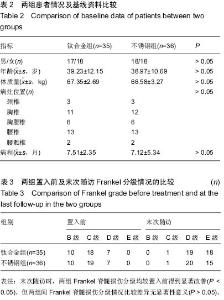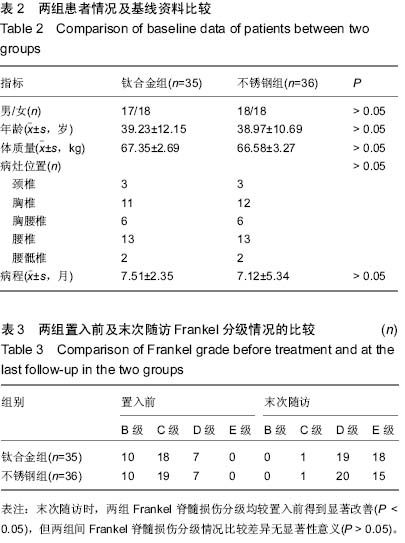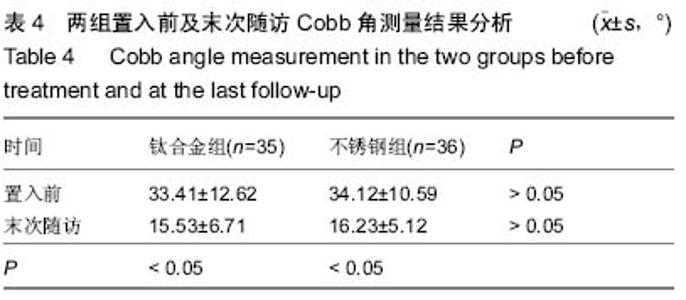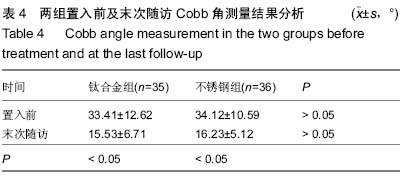| [1] |
Li Xingping, Xiao Dongqin, Zhao Qiao, Chen Shuo, Bai Yiguang, Liu Kang, Feng Gang, Duan Ke.
Preparation and properties of copper-loaded antibacterial functional film on titanium surface
[J]. Chinese Journal of Tissue Engineering Research, 2021, 25(4): 553-557.
|
| [2] |
Shi Xiaoxiu, Mao Shilong, Liu Yang, Ma Xingshuang, Luo Yanfeng.
Comparison of tantalum and titanium (alloy) as orthopedic materials: physical and chemical indexes, antibacterial and osteogenic ability
[J]. Chinese Journal of Tissue Engineering Research, 2021, 25(4): 593-599.
|
| [3] |
Zhang Xianjun, Zhao Xijiang.
In vivo osteogenic properties of silicon-incorporated titanium dioxide nanotubes on titanium screw surface
[J]. Chinese Journal of Tissue Engineering Research, 2021, 25(16): 2461-2465.
|
| [4] |
Liu Zige, Liu Xinrui, Li Yan, Song Guorui, Zhang Chen, Chen Desheng.
In vitro experiment of tetrandrine on the model of osteolysis induced by wear particles around the prosthesis
[J]. Chinese Journal of Tissue Engineering Research, 2021, 25(15): 2358-2363.
|
| [5] |
Wu Shengxiang, Liu Yuan, Lu Shuai.
Mini-locking titanium plate system fixation in the treatment of carpal scaphoid fracture
[J]. Chinese Journal of Tissue Engineering Research, 2021, 25(12): 1874-1878.
|
| [6] |
Zhang Lixing, Tian Ang, Li Xi, Bai Xizhuang.
Drug-release characteristic and biological toxicity of TiO2 nanotube/hydroxyapatite loaded vancomycin coating
[J]. Chinese Journal of Tissue Engineering Research, 2021, 25(10): 1500-1506.
|
| [7] |
Gu Yuanping, Lu Chenghui .
Cleaning efficacy of two kinds of mechanical nickel-titanium instruments in preparation of severely curved root canals: a scanning electron microscopic study
[J]. Chinese Journal of Tissue Engineering Research, 2021, 25(10): 1566-1570.
|
| [8] |
Liu Chundong, Shen Xiaoqing, Zhang Yanli, Zhang Xiaogen, Wu Buling.
Effects of strontium-modified titanium surfaces on adhesion,
migration and proliferation of bone marrow mesenchymal stem cells and
expression of bone formation-related genes
[J]. Chinese Journal of Tissue Engineering Research, 2020, 24(7): 1009-1015.
|
| [9] |
Yang Xu, Zhao Xiaofeng, Qi Detai, Wang Xiaonan, Jin Yuanzhang, Zhou Runtian, Zhao Bin.
Changes in cervical sagittal balance after three-dimensional printing ACT titanium cage in anterior cervical discectomy with fusion
[J]. Chinese Journal of Tissue Engineering Research, 2020, 24(36): 5741-5748.
|
| [10] |
Zhang Hui, Xu Nanwei, Nong Luming, Tang Xueming, Zhou Xindie, Jiang Wei.
Factors influencing the prognosis of central cord syndrome
treated with drug therapy and titanium plate fixation
[J]. Chinese Journal of Tissue Engineering Research, 2020, 24(3): 348-353.
|
| [11] |
Yang Xiao, Mei Wei, Zhang Wei.
Absorbable rod or titanium alloy screws for Mason type II radial head fractures
[J]. Chinese Journal of Tissue Engineering Research, 2020, 24(27): 4328-4332.
|
| [12] |
Zhang Xuan, Li Yunpeng, Zhang Xuejian, Yin Chuanrong, Deng Yue.
Guided bone regeneration using preformed titanium mesh combined with bioabsorbable membranes in aesthetic area
[J]. Chinese Journal of Tissue Engineering Research, 2020, 24(26): 4112-4117.
|
| [13] |
Zhang Lan, Wang Xiang, Liu Jun, Zhang Chunqiu, Ye Jinduo, Liu Lu.
Tensile properties of three-dimensional printed porous
titanium alloy trabecular bone
[J]. Chinese Journal of Tissue Engineering Research, 2020, 24(22): 3498-3503.
|
| [14] |
Wang Yanling, Shao Zhe, He Wei.
Micro-arc oxidation and osteoblast proliferation and
osteogenic differentiation ability on titanium surface
[J]. Chinese Journal of Tissue Engineering Research, 2020, 24(22): 3486-3490.
|
| [15] |
Sun Xirao, Wang Chengyue, Zhao Yuan, Zhang Zhenbao.
In vitro corrosion and in vivo biosafety of pure magnesium film
[J]. Chinese Journal of Tissue Engineering Research, 2020, 24(16): 2578-2584.
|



